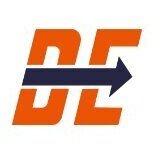-
Welcome to Auto Parts Forum
Whether you are a veteran automotive parts guru or just someone looking for some quick auto parts advice, register today and start a new topic in our forum. Registration is free and you can even sign up with social network platforms such as Facebook, X, and LinkedIn.
House Subcommittee Examines Potential Impact of REPAIR Act
-
Similar Topics
-
By Alex
We are setting up this topic to share information on any impact the current
link hidden, please login to view has on the auto parts industry. Sourcing, distribution, parts availability, and business impact. General questions and sharing of knowledge are welcome. The WHO has designated this a global pandemic that is already affecting many industries, including most sectors in the automotive industry. Corporate and Independent automotive parts stores are being impacted by repair shop businesses slowing down. As you know, many parts come from China and other parts of the world, which are affected by the current pandemic.
Please share how this is impacting you and what you are seeing.
link hidden, please login to view -
By Daysyore
The catalytic converter is a critical component in modern vehicles that plays a crucial role in reducing harmful emissions. This device, typically located in the exhaust system, helps convert toxic pollutants from the engine's exhaust gases into less harmful substances. While catalytic converters have been instrumental in improving air quality and meeting emission standards, they have also become a hot topic of discussion due to their environmental impact, cost, and potential for theft. In this article, we will explore the significance of catalytic converters, their environmental benefits, challenges faced, and potential future developments.
Environmental Benefits:
Catalytic converters have made significant contributions to reducing air pollution and improving overall environmental quality. They primarily work by facilitating chemical reactions that convert harmful pollutants into less harmful compounds. Key environmental benefits include:
1. Emission Reduction: Catalytic converters effectively reduce emissions of harmful pollutants such as carbon monoxide (CO), nitrogen oxides (NOx), and unburned hydrocarbons (HC). These pollutants contribute to smog formation, respiratory issues, and environmental degradation.
2. Compliance with Regulations: Catalytic converters enable vehicles to meet stringent emission regulations imposed by governments worldwide. These regulations aim to mitigate the adverse effects of vehicle emissions on public health and the environment.
Challenges and Concerns:
Despite their environmental benefits, catalytic converters face several challenges and concerns:
1. Precious Metal Usage: Catalytic converters contain precious metals like platinum, palladium, and rhodium, which act as catalysts. The extraction and mining of these metals can have negative environmental impacts, including habitat destruction and water pollution.
2. Cost and Maintenance: Catalytic converters are expensive components, and their replacement or repair can be financially burdensome for vehicle owners. Additionally, improper maintenance or the use of low-quality fuels can lead to premature failure or reduced effectiveness of the catalytic converter.
3. Theft: Catalytic converters contain valuable metals, making them a target for theft. Criminals often remove catalytic converters from vehicles due to their high resale value, leading to inconvenience and financial loss for vehicle owners.
Future Developments:
To address the challenges associated with catalytic converters, ongoing research and development efforts are focused on potential advancements:
1. Alternative Catalyst Materials: Scientists are exploring alternative catalyst materials that can reduce or eliminate the need for precious metals in catalytic converters. This could help mitigate environmental concerns related to metal extraction and lower production costs.
2. Improved Efficiency: Researchers are working on enhancing the efficiency of catalytic converters to further reduce emissions and improve fuel economy. Advancements in catalyst design and optimization of chemical reactions can contribute to more effective pollution control.
3. Anti-Theft Measures: Automotive manufacturers and law enforcement agencies are collaborating to develop anti-theft measures, such as tamper-resistant designs and identification technologies, to deter catalytic converter theft.
Conclusion:
The catalytic converter remains a vital component in the automotive industry's efforts to reduce harmful emissions and improve air quality. While it has made significant environmental contributions, challenges such as precious metal usage, cost, and theft persist. Ongoing research and development endeavors aim to address these concerns through alternative catalyst materials, improved efficiency, and anti-theft measures. As technology advances, striking a balance between environmental impact, automotive performance, and affordability will be crucial in shaping the future of catalytic converters and sustainable transportation.





Recommended Posts
Join the conversation
You can post now and register later. If you have an account, sign in now to post with your account.
Note: Your post will require moderator approval before it will be visible.